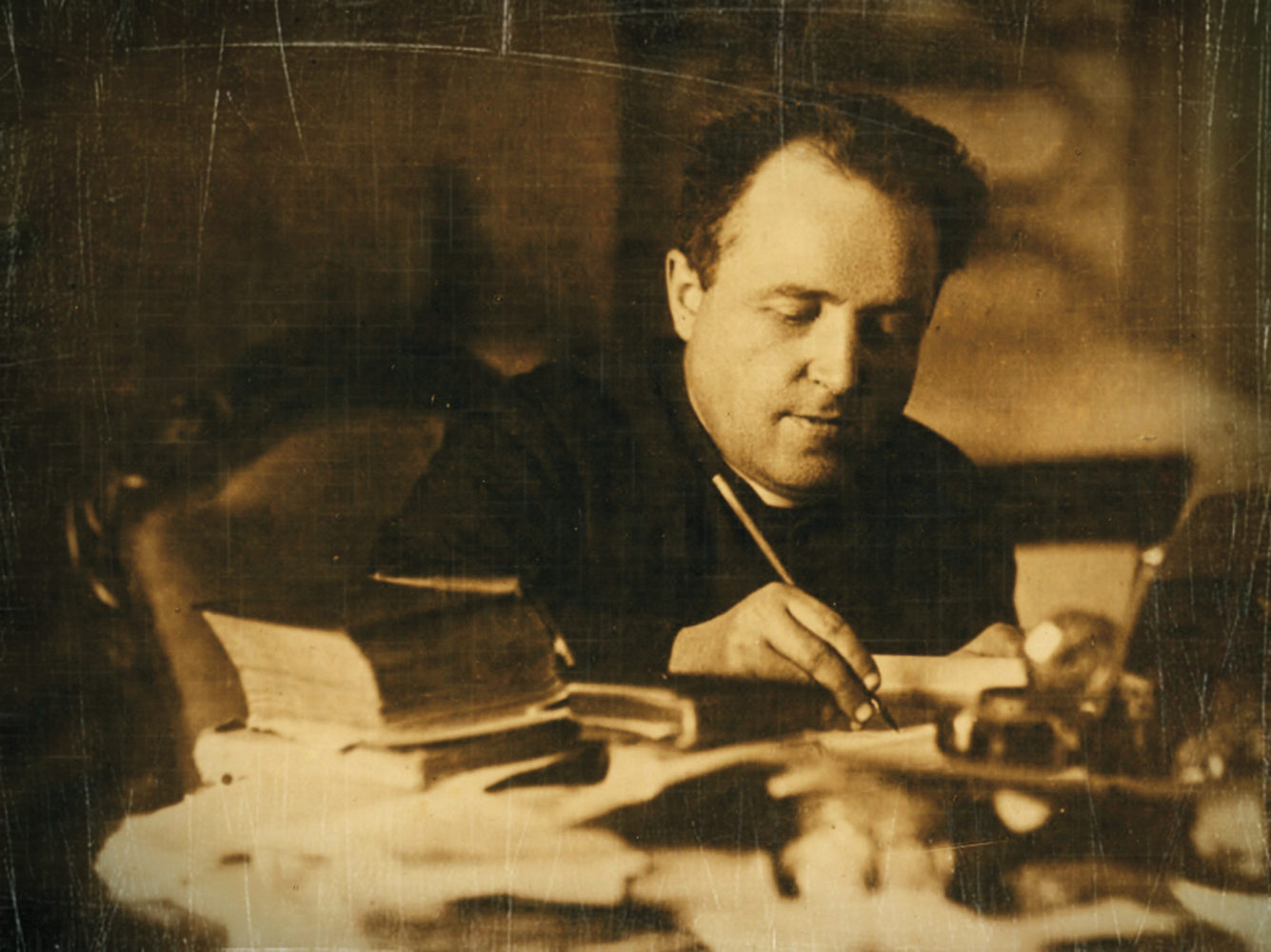Par Aurelio Porfiri, compositeur, chef, écrivain et éducateur
Entre le XIXe et le XXe siècle, le monde de la musique d’église a connu plusieurs tournants. La plupart des lecteurs penseront sans doute à la réforme qui a fait suite aux documents du concile Vatican II, qui a profondément affecté la musique que nous entendons dans les églises catholiques. Mais le premier véritable tournant date du 22 novembre 1903: ce jour-là, le pape Pie X a émis un Motu Proprio (c’est-à-dire un document écrit de sa propre initiative, sans passer pas les instances de la curie).
Ce Motu Proprio concernait la musique sacrée, et souhaitait réformer la pratique de la musique d’église de sorte à ʺpurifierʺ le temple de Dieu de la forte influence du style d’opéra : ʺNous reconnaissons avec joie et satisfaction tout le bien qui s’est opéré en cette matière au cours de ces dix dernières années, même dans Notre auguste ville de Rome et dans beaucoup d’églises, de Notre patrie, mais d’une façon plus particulière chez certaines nations. Là, des hommes remarquables et zélés pour le culte de Dieu, avec l’approbation du Saint-Siège et sous la direction des évêques, ont formé, en se groupant, des Sociétés florissantes et ont pleinement remis en honneur la musique sacrée presque dans chacune de leurs églises et chapelles.
Ce progrès, toutefois, est encore très loin d’être commun à tous. Si donc Nous consultons Notre propre expérience et tenons compte des plaintes sans nombre qui, de toutes parts, nous sont parvenues en ce court laps de temps écoulé depuis qu’il a plu au Seigneur d’élever Notre humble personne au faîte suprême du Pontificat romain, Nous estimons que Notre premier devoir est d’élever la voix sans différer davantage pour réprouver et condamner tout ce qui, dans les fonctions du culte et la célébration des offices de l’Eglise, s’écarte de la droite règle indiquée. Notre plus vif désir étant, en effet, que le véritable esprit chrétien refleurisse de toute façon et se maintienne chez tous les fidèles, il est nécessaire de pourvoir avant tout à la sainteté et à la dignité du temple où les fidèles se réunissent précisément pour puiser cet esprit à sa source première et indispensable : la participation active aux mystères sacro-saints et à la prière publique et solennelle de l’Eglise. Car c’est en vain que nous espérons voir descendre sur nous, à cette fin, l’abondance des bénédictions du ciel si notre hommage au Très-Haut, au lieu de monter en odeur de suavité, remet au contraire dans la main du Seigneur les fouets avec lesquels le divin Rédempteur chassa autrefois du Temple ses indignes profanateurs.ʺ
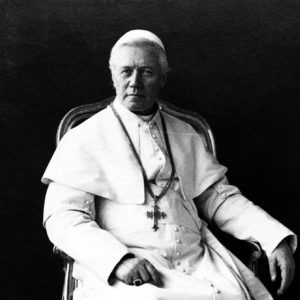
Malgré les termes quelque peu diplomates du Pontife, le style théâtral était entré dans un nombre incalculable de répertoires d’organistes et de chorales, de sorte que la tâche de restaurer l’authentique musique chorale (dont les modèles suprêmes sont le Chant Grégorien et la Polyphonie de la Renaissance), malgré l’aide d’hommes rassemblés en sociétés (céciliennes), était loin d’être aisée. Le Pape avait en effet besoin d’un homme pouvant aider à renouveler le répertoire en offrant à ces chœurs confrontés aux difficultés du Chant ou de la complexe polyphonie de Palestrina quelque chose de plus accessible et en accord avec la dignité du Temple. Ou encore en offrant aux bonnes chorales des compositions modernes dignes des temps anciens.
Lorsque le Pape Pie X était encore Patriarche de Venise, son Maître de Chœur était un jeune prêtre qu’il avait lui-même mis en avant en 1898 pour la position de Maître de Chœur de la Chapelle Sixtine. Cet homme talentueux, qu’il rencontrera à nouveau lors de son accession au Pontificat, était Lorenzo Perosi, né à Tortone (Italie du Nord) en 1872. Son père, lui-même maître de Chœur, lui donnera sa première instruction musicale. Il étudiera ensuite au Conservatoire de Milan et dans l’école de Musique Sacrée de Ratisbonne (avec le professeur renommé Franz Wavier Haberl). Dès son plus jeune âge, il ressentira la nécessité d’une réforme dans la Musique d’Eglise et contribuera à cet objectif avec ses propres compositions. Il deviendra également prêtre en 1894. Après avoir servi dans plusieurs chorales (dont la célèbre chorale musicale de Saint-Marc à Venise), il est appelé en 1898 au poste de Vice-Maître à la Chapelle Sixtine à Rome. En 1902, il en deviendra le Maître de Chapelle. Il restera en poste jusqu’en 1956, année de sa mort, mais non sans difficultés, la plus importante étant ses troubles mentaux qui le rendront parfois incapable d’assumer correctement à ses devoirs. De son temps il était certainement très populaire, et sa musique est véritablement entrée dans les répertoires de nombreuses églises de par le monde. Aujourd’hui encore, elle est largement interprétée par des chœurs du monde entier. Il était un grand compositeur d’Oratorios (Il Natale del Redentore, La Risurrezione di Cristo, Transitus Animae, L’Entrata di Cristo in Gerusalemme etc.) qui lui ont donné une large audience auprès des chanteurs, organistes et chefs de chœurs. Toutefois, il est certain qu’à côté des Oratorios, c’est la musique liturgique qui deviendra la clef de son succès. Messes, Motets, Répons et innombrables compositions au service de la liturgie catholique, compositions qui lui donneront un statut dans la musique chorale qui aujourd’hui encore est presque sans équivalent.
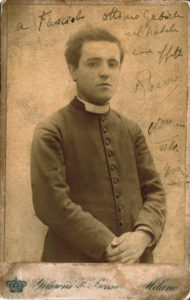
Le Dr. Michael Dubiaga Jr. se souvient ainsi de lui dans un essai publié dans le Journal Seattle Catholic (30 novembre 2005): ʺLorenzo Perosi était un jeune prodige musical dont les remarquables talents et la piété personnelle lui ont permis un remarquable avancement dès son jeune âge. Reconnu et respecté dans l’Europe entière, Don Perosi était fréquemment demandé par les musiciens voyageant à Rome. Parmi ses activités multidimensionnelles, on se souvient encore aujourd’hui dans de nombreux pays de ses compositions prolifiques. Son apport paraît stupéfiant – plus d’une douzaine d’oratorios pour solistes, chœurs et orchestres, près de trente messes, des centaines de motets, de psaumes et d’hymnes, des suites orchestrales, des concertos pour violon, piano et clarinette, des douzaines de trios, quatuors et quintettes à corde, et encore divers autres morceaux de circonstance. Durant sa vie, il a entretenu une correspondance polyglotte qui a été préservée à la Librairie du Vatican. Peu d’individus ont eu une influence aussi importante sur l’évolution de la musique catholique sacrée pendant la première moitié du XXe siècleʺ.
Alors, quel était le secret de son succès? Pourquoi je l’appelle un mystère? Il est vrai que ses détracteurs ont critiqué une simplification excessive de significations musicales dans certains de ces morceaux, et l’accusent de ne pas être techniquement à la hauteur. D’après ses détracteurs, cela mènerait à une dégradation de la nécessaire ʺpureté des formesʺ (exigée par le Motu Proprio de St. Pie X) introduisant des éléments de banalité dans les mondes sacrés de la musique liturgique. Il peut y avoir du vrai dans ces affirmations. Comme nous l’avons souligné, il est également avéré qu’il comptait servir des chorales de niveau peu élevé, mais le danger dénoncé par ses détracteurs a une dimension réelle, en raison du nombre d’imitateurs qui ont commencé à produire des compositions similaires mais sans l’inspiration présente dans les œuvres de Perosi. Voilà pour moi le mystère : dans les nombreuses rencontres que j’ai pu avoir avec la musique de ce Maître, il y a une qualité mystérieuse qui à la fin vient ʺsauver la situationʺ. On peut ressentir que même si la technique n’est pas toujours comme elle devrait l’être, le tout est soutenu par une sorte de ʺmagie spirituelleʺ qui emplit toujours sa musique d’une atmosphère de prière. Si nous pensons aux simples motets comme Ave Maria, Iubilate Deo, Ecce Panis Angelorum et beaucoup d’autres, nous ne pouvons nous empêcher d’être frappés par leur beauté simple et par leur considérable efficacité. Celui qui veut essayer quelque chose de plus stimulant, au-delà des messes incroyablement populaires (Prima Pontificalis, Secunda Pontificalis, Te Deum Laudamus, Benedicamus Domino, etc), peut se tourner vers son Magnificat pour chœur mixte et orgue, où l’inspiration mélodique et le sens instinctif de la forme musicale est présent à chaque mesure. Ou encore le splendide O Sanctissima Anima, un motet envoûtant pour chœur mixte dont la qualité spirituelle est si prépondérante qu’on préférera l’entendre à genoux.
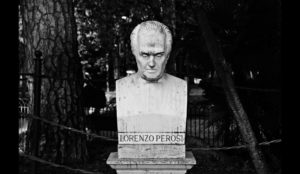
Aujourd’hui où nous célébrons les 60 ans de sa mort, que reste-t-il de lui ? Il est certain qu’il est encore très connu, même hors d’Italie. Beaucoup de chorales, aux quatre coins du monde, continuent à chanter sa musique; mais sans doute moins qu’auparavant, notamment en raison de la crise que la musique d’église catholique est en train de traverser. Je ne pense pas que son nom disparaisse jamais des répertoires, mais il est vrai que de nos jours son influence est plus faible. Nous pouvons espérer que la contribution de cet humble prêtre à la musique d’église soit redécouverte à l’échelle internationale à travers une étude approfondie définissant la valeur ʺmystérieuseʺ de sa musique, les sources de son inspiration et sa place dans l’histoire de la musique.
Aurelio Porfiri est un compositeur italien, chef, écrivain et éducateur. Il a publié 13 livres et plus de 300 articles. Ses compositions sont publiées par divers éditeurs en Italie, France, Allemagne, États-Unis et Chine. Il vit à Rome. Courriel: aurelioporfiri@hotmail.com
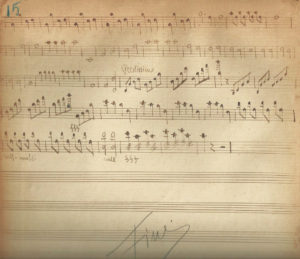
Extrait de Mystery Lorenzo Perosis
Traduit de l’anglais par Alice Ligouy (Royaume Uni)

